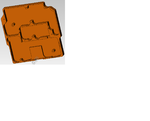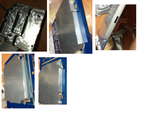breelizhong
Newbie level 3
Hi All,
I'm working on CNC milled type RF shield with aluminium, it is perfect for small production and prototype, as the setup cost is almost zero but unit price is high, like a few dollars. There will be no solder needed, as they will be fixed to PCB by screws.
The partition walls will sit on the soldermask removal area, and they contact very good from seen.
Is any one who also working on this type of shield? We may share some experience.
Bree
- - - Updated - - -

Upload pic try
I'm working on CNC milled type RF shield with aluminium, it is perfect for small production and prototype, as the setup cost is almost zero but unit price is high, like a few dollars. There will be no solder needed, as they will be fixed to PCB by screws.
The partition walls will sit on the soldermask removal area, and they contact very good from seen.
Is any one who also working on this type of shield? We may share some experience.
Bree
- - - Updated - - -

Upload pic try
